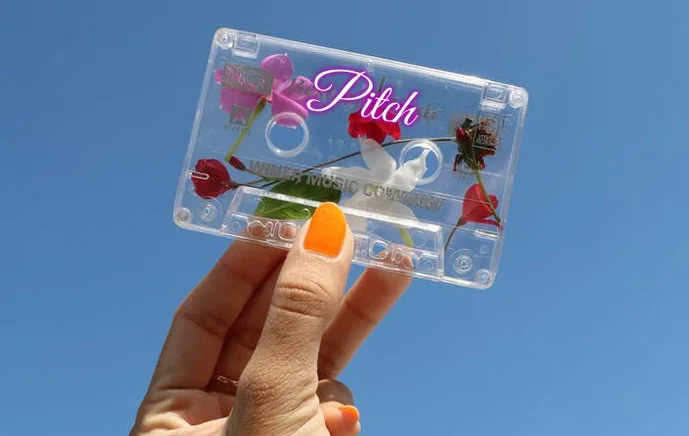Freelancing guide: Everything you need to know about pitching
Pitching the the epicenter of the freelance writer’s world, so it is important to know what it is and how to do it properly to keep cash flowing in. Here’s what pitching is and how to do it the right way to get results.
What is pitching?
Pitching is basically the act of sending out ideas to publications in hopes that they will like your awesomesauce idea and have you write the idea in the form of an article, blog post, ebook, avertisment, web copy, ect. Its definition also extends to the act of contacting people and companies to get new gigs.
Writers need to be constantly reaching out through pitches to keep money flowing into their business. My motto is, “Keep 12 pitches in play to keep the bills at bay.” That means send out 12 pitches, and when one comes back, send out another one.
Pitching awesomesauce
After more than 20 years as a freelance writer, I know what an editor wants in a pitch, and what they don’t want. Here’s a basic outline of what a good pitch consists of:
A zazzy subject title- Grab the editor’s attention so they will open your email. The only exception to this is if the publication’s guidelines state a phrase or word that you should specifically put in the subject line. Don’t know how to find a publication’s guidelines? Get a copy of Writer’s Market. It’s all in there.
Introduction- This starts with a hello and why you are contacting the editor. Something like, “Hello Jane, (yes, make sure to use the editor’s name!) I saw that you are in need of xyz ideas for ABC Magazine. So, I would like to pitch you my idea for an article on xyz.” If you're applying for a gig, tell them!
An outline- Here you will briefly layout what your article idea is about and why it’s special. Only write one to two paragraphs, tops! Editors want you to get to the point, and if you can’t describe your article in two paragraphs, you probably need to go think out the idea a little more, anyway.
Credentials- Any information about where you have previously written (if you have written anywhere, if not, leave it out) and three links to clips or a link to your portfolio. If you think your experience on the topic is impressive, put it after the intro.
Close- I always like to end my pitches with something like, “Thank you for your time and consideration. I look forward to working with you soon.” Then, sign off with your name.
That’s it. Sometimes I switch things up, but this is the basic outline of a good pitch.
Examples of pitches that worked
Okay, those steps seems simple, but what do they look like in action? Here’s a couple of pitches that I’ve written that got me an assignment. This first one got me a byline on Rachael Ray’s site.
Dear Princess Gabbara,
I am a freelance writer with 20 years of experience writing health, tech and lifestyle articles and blogs. I have worked with many large sites, such as CBS, MTV, MSN, USA Today, Digital Trends and CNET.
Google Home, Alexa, Facebook Portal...Which One is Right for Me?
This article would focus on how to choose the right home assistant for your family's needs. I have written extensively about each one, so I know what they offer and how they can benefit different types of users.
Topics I would cover:
-Which is best for home chefs?
-Which one allows you to organize your life easily?
-Which one is best for keeping in touch with long-distance family and friends?
I would write the article in a friendly and informative style.
You can see some examples of my work here: https://abradford.contently.com/ Thanks for your time!
Many thanks,
Alina Bradford
This next pitch got me a writing gig at Family Handyman. Notice this isn’t an article pitch, but a pitch for a gig opening.
Hi Berit,
I saw your need for DIY freelancers. I have been writing DIY content (particularly smart home topics) for many years. My work has been published by CNET, Digital Trends, CBS, MTVNews, Everyday with Rachael Ray and many more. I would love to join your team. Here are some links to my work:
https://www.digitaltrends.com/home/how-to-talk-to-samuel-l-jackson-using-alexa
https://www.cnet.com/how-to/how-to-get-google-home-to-play-your-youtube-playlist/
https://www.rachaelraymag.com/whats-new/how-to-pick-the-right-video-smart-tech-for-your-home
You can learn more about me here: LinkedIn
Thank you for your time. I look forward to hearing from you.
Alina Bradford
You’ve got the goods
I know, you’re probably thinking, “Well, ya, the editor gave you a chance! Look at your credentials!” Let me tell you, I’ve been using this method of pitching from the beginning. It works, as long as you have a great article idea or can convenience the editor that you’re the person for the job. If you don’t have on-the-job experience, tell the editor:
How the topic has been a lifelong hobby or passion
About training you received that relates to the topic/gig
You know experts that can be interviewed for this piece and/or any in the future
Life experience you’ve had with the topic (raising a special needs child, caring for ailing parents, mental health issues, parenting multiples, beating cancer, etc.)
The fact that you know SEO and writing compelling calls to action
Follow up
After you send a pitch, follow up. Sometimes an editor will miss your message the first time. A good rule of thumb is to wait two weeks, then send a little something like this:
Hi Jane,
I’m just checking in on the pitch/application I sent you two weeks ago. I’ve pasted it below for your convenience.
Thanks for your time and consideration!
Alina Bradford
Keep track of your pitches
As you send out pitches, you need to keep a record of what ideas you sent out, what gigs you applied for and the details. After all, you need to know when to follow up and you need to remember their rates for future negotiations. Things you need to note include:
Your pitch idea or gig position
The publisher name or potential client
Date you sent the pitch
When to follow up
Contact details
Pay rates (if you know them)
You can write all of this information in a notebook or type it up in a spreadsheet. If you’re not sure how to set up your tracking, I’ve created a workbook to keep all of your pitches in and you can get the No-Fluff Pitch Tracker on Amazon, or you can get spreadsheets to print out here.
Quick tips for pitching
Always double-check spelling and grammar
Always use the editor’s name if you know it
Make the email’s subject line an attention grabber
Be your own hype man
Keep track of pitches
Follow up in two weeks
Want to learn how to make a successful living as a freelance writer? Get the No-Fluff Freelance Writer Starter Pack. Only $29.97.











